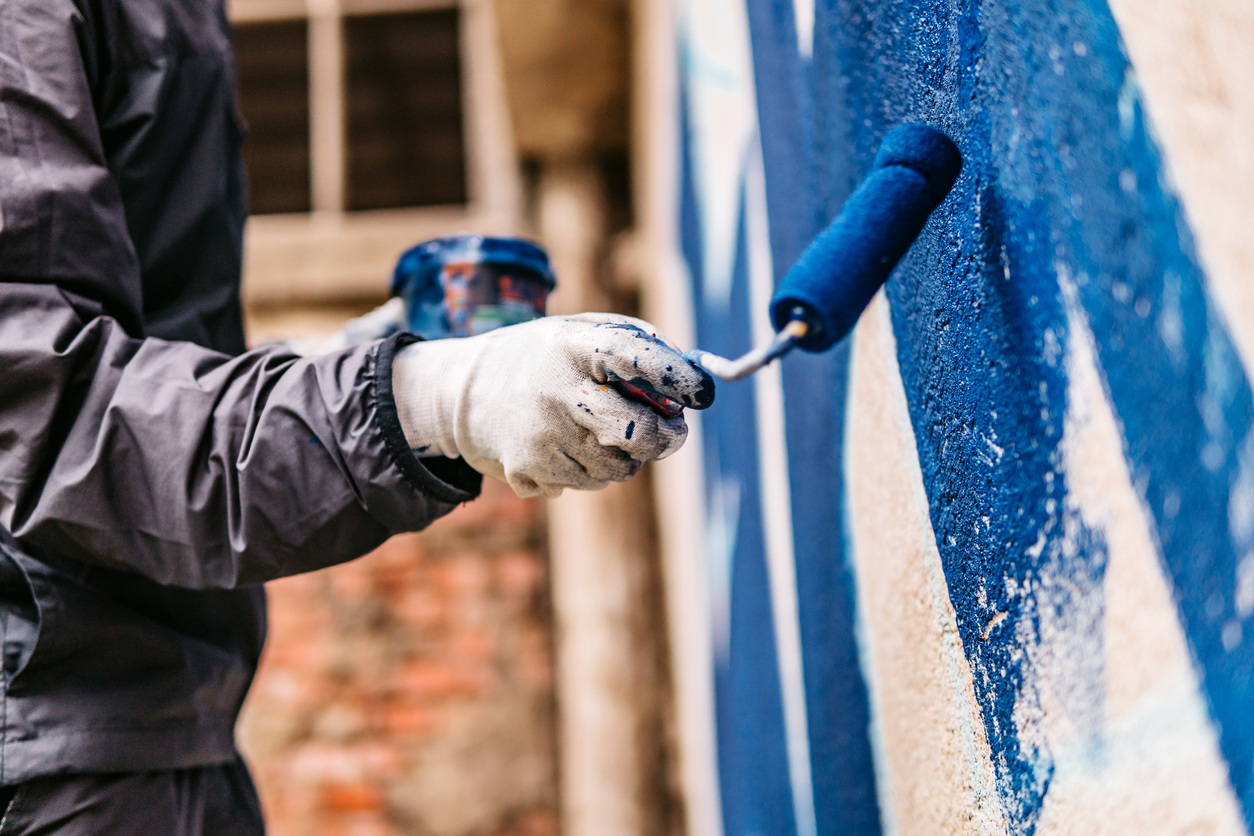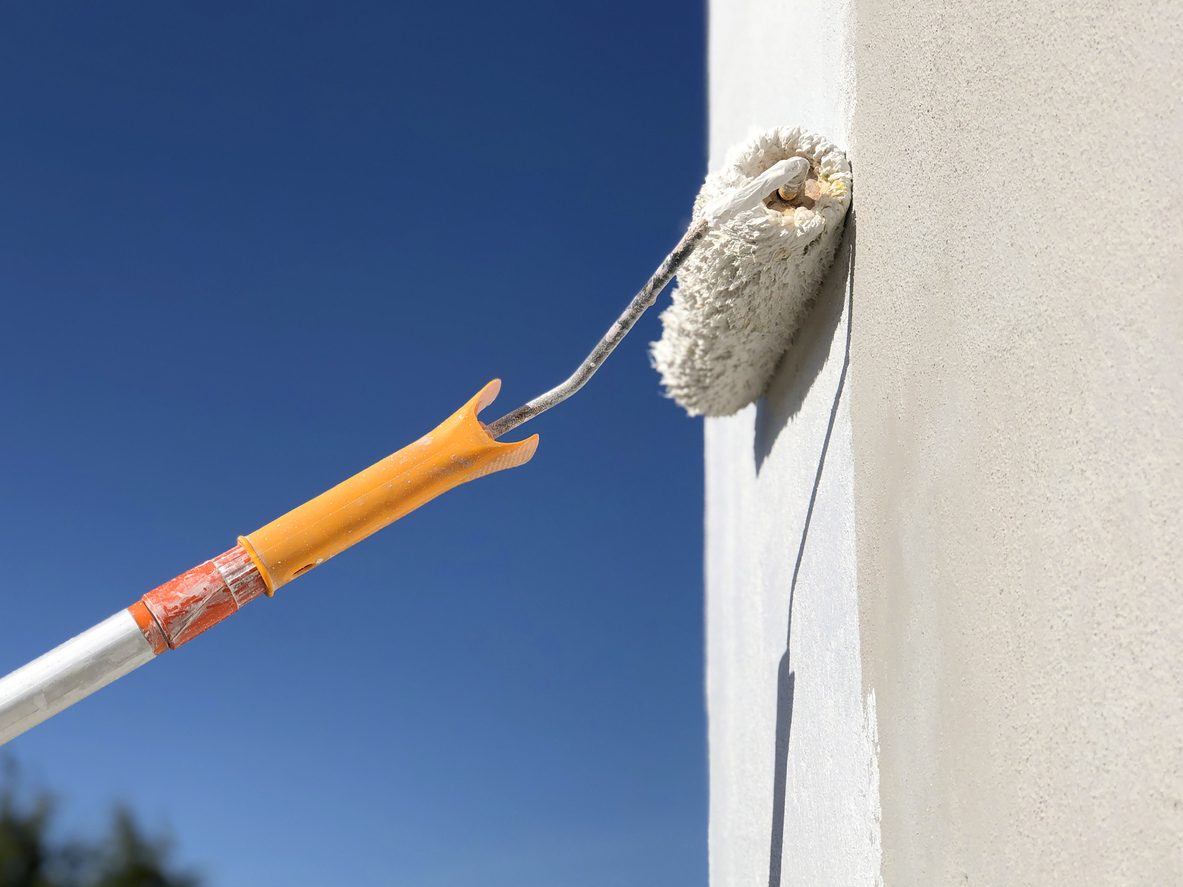Stucco is known as an attractive, affordable and durable siding material that’s easy to maintain. That’s why more and more homeowners are choosing stucco as their siding of choice. If you’re renovating or building a new home, stucco is always a great choice. But what if you install stucco and decide you don’t like the colour, or your old coat of paint is starting to show signs of fading? Can you paint stucco? Well, the answer is a resounding yes!
Whether you want a fresh new look or are doing some basic home maintenance, painting your stucco can be a great way to improve the look of any home and increase your curb appeal (And, therefore, your property value!). However, if you’ve never done stucco painting before, it can be a little daunting to jump into for the first time. But don’t worry, today’s article will help you learn how to paint your stucco properly.
There are numerous painting techniques that you could use when undertaking this project, each with its unique benefits and drawbacks. Here are ten of the best stucco painting techniques you should know about if you want to paint your stucco walls.
Stucco Painting With Solid Color
One of the easiest ways to paint over old, faded stucco is simply covering it up with new solid colour paint. This method works well for both inside and outside walls where no texture is desired. For indoor walls, flat finishes work best, while glossy paints provide extra protection against moisture. If you would like to paint your outside walls, semi-gloss or satin finishes work best.
Stucco Painting With Texture
Using pre-mixed stucco paint can give you an ultra-realistic texture that almost looks as though it were the real thing. You must first use a wire brush to clean and scratch up your walls to start this method off. Next, fill in all of the deep scratches with a joint compound until smooth. Spray down your wall using a spray bottle full of water and leave overnight to dry completely. Finally, cover the damp surface with the pre-mixed stucco paint and let it cure completely before applying additional coats – this will ensure no bleeding lines between coats.
Stucco Painting With a Stain
Staining your stucco can produce beautiful results and is usually done with a semi-transparent stain. To start, you must first use a wire brush to clean and scratch up your walls. Next, fill in all of the deep scratches with a joint compound until smooth. Spray down your wall using a spray bottle full of water and leave overnight to dry completely. Finally, apply the stain according to the manufacturer’s instructions and let it cure completely before applying additional coats, ensuring no bleeding lines between coats.
Stucco Painting Using Stencils/Cutouts
Painting using stencils or cutouts can make an effective way to paint small patches on your stucco walls. To start, you must first use a wire brush to clean and scratch up your walls. Next, fill in all of the deep scratches with a joint compound until smooth. Spray down your wall using a spray bottle full of water and leave overnight to dry completely. Finally, paint over the damp surface with an oil-based primer appropriate for textured surfaces before applying both base coats and top coats; this will ensure that there are no problems between coats.
Stucco Painting Using Stucco Patch
Stucco patches can be another effective way to cover minor imperfections or areas that need repairs on your stucco home. To create these patch pieces, mix some pre-mixed stucco and apply them to the top of your pre-mixed joint compound. Once these patches have dried, sand the surface as needed before priming and painting as you usually would.
Stucco Painting Using a New Stucco Texture Coat
Painting with a new texture coat can be an effective way to completely change your home’s look. You must first use a wire brush to clean and scratch up your walls to start this method off. Next, fill in all of the deep scratches with a joint compound until smooth and let dry overnight [no big deal]. Mix some pre-mixed stucco and spread it over your newly textured wall using a trowel similar to laying tile, making sure to cover any patches or other areas that need repair. Once the stucco has dried, sand it lightly before priming and painting as you usually would.

Stucco Painting Using Old Stucco Texture Coat
Painting with an old texture coat can be an effective way to refine your home’s look without spending too much money on a professional contractor. You must first use a wire brush to clean and scratch up your walls to start this method off. Next, fill in all of the deep scratches with a joint compound until smooth and let dry overnight. Mix some pre-mixed stucco and spread it over your newly textured wall using a trowel similar to laying tile, making sure to cover any patches or other areas that need repair. Once the stucco has dried, sand it lightly before priming and painting as you usually would.
Stucco Painting Using Flashing Paint
Painting your flashing can improve your home’s exterior by giving it a bolder look with an extra layer of protection. You must first use a wire brush to clean and scratch up your walls to start this method off. Next, fill in all of the deep scratches with a joint compound until smooth and let dry overnight. Spray down your wall using a spray bottle full of water and leave overnight to dry completely. Finally, cover the damp surface with the pre-mixed flashing paint before letting it cure completely before priming and painting as you usually would.
Summary
The key to finding the best stucco painting technique is finding the one you’re most comfortable using. If you want to try something new, there are many ways to go about it. Maybe spend some time researching and experimenting before committing fully. If painting your stucco is too daunting, time-consuming or physically demanding, you can always hire a professional stucco contractor to get the job done.
